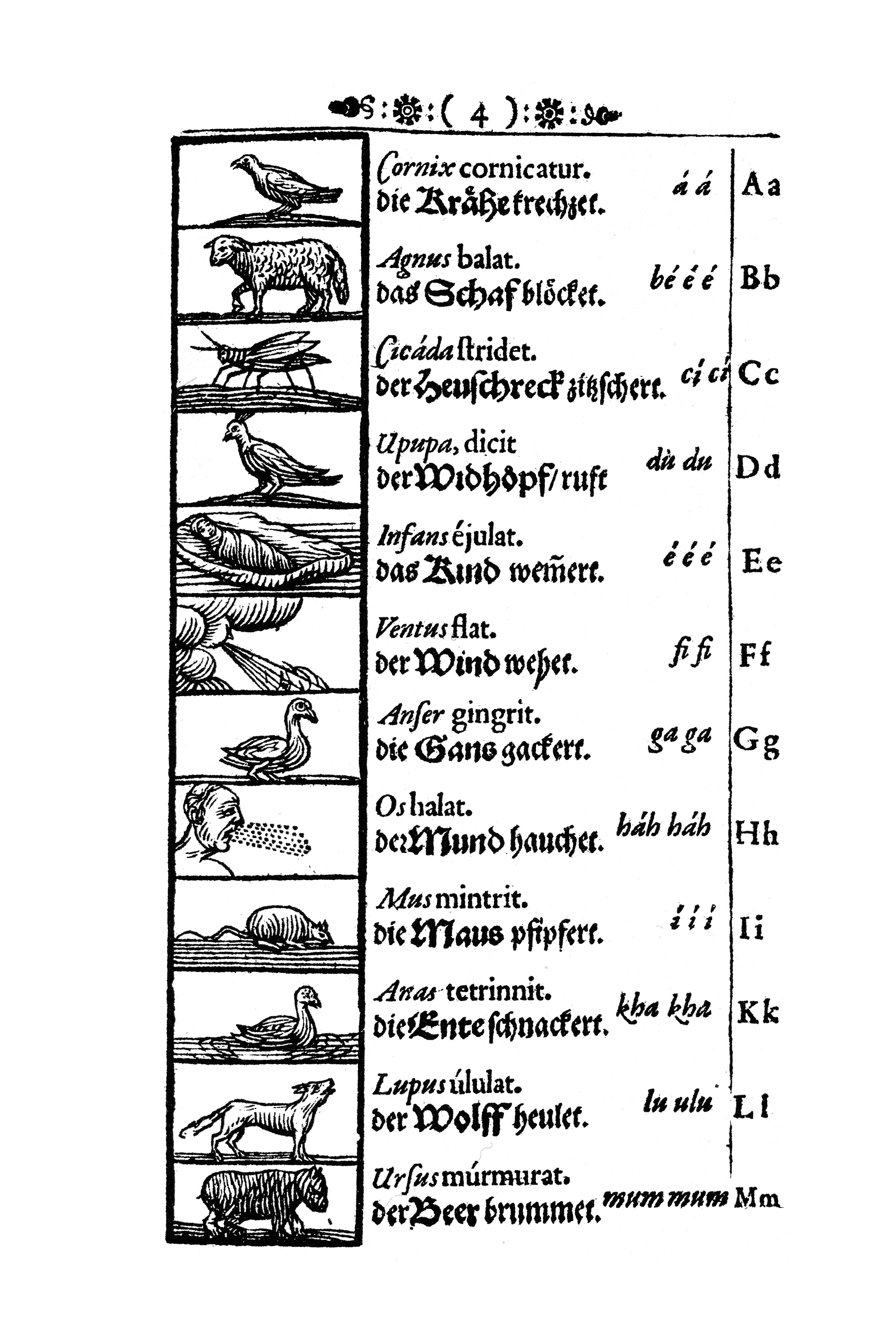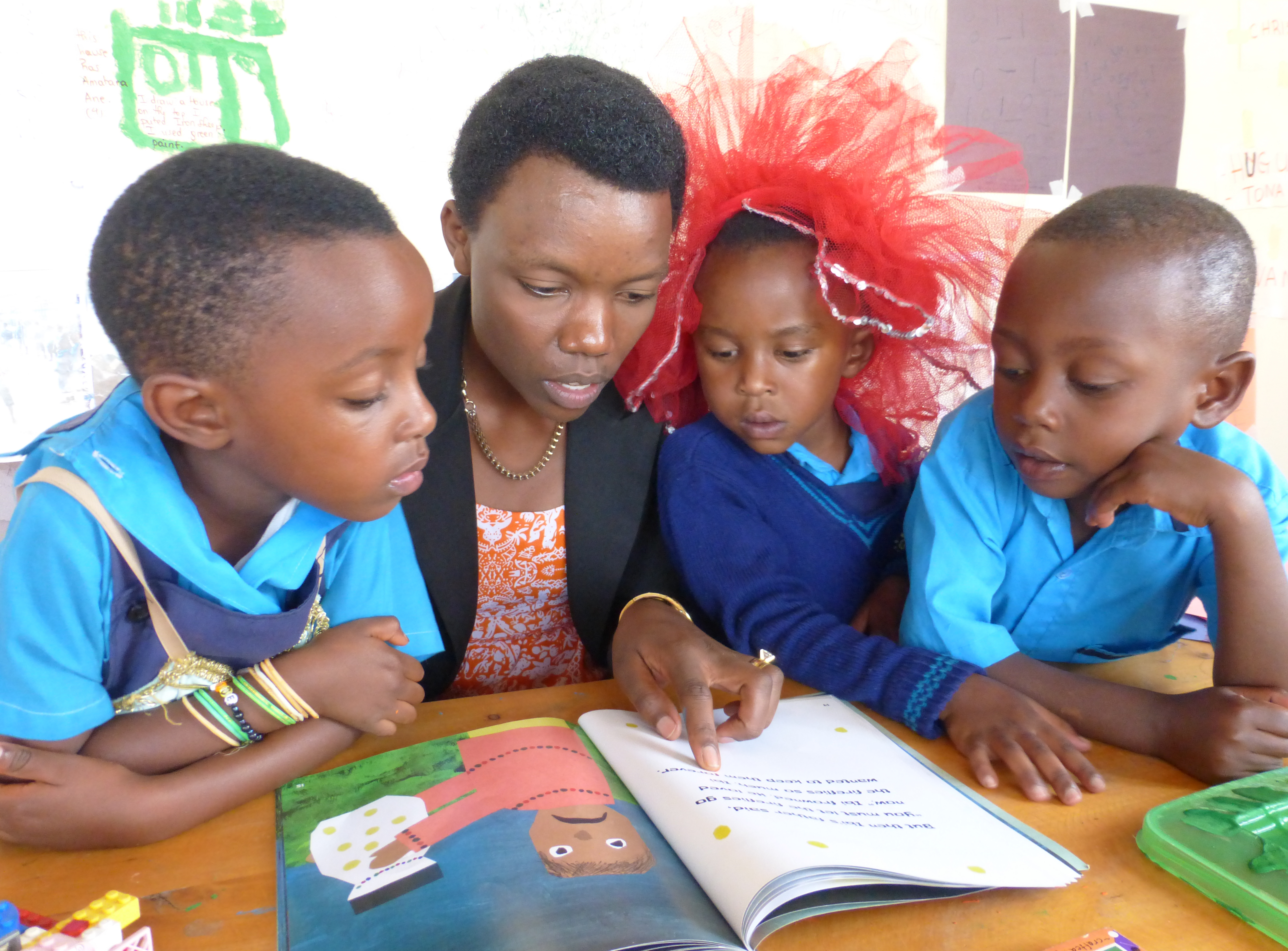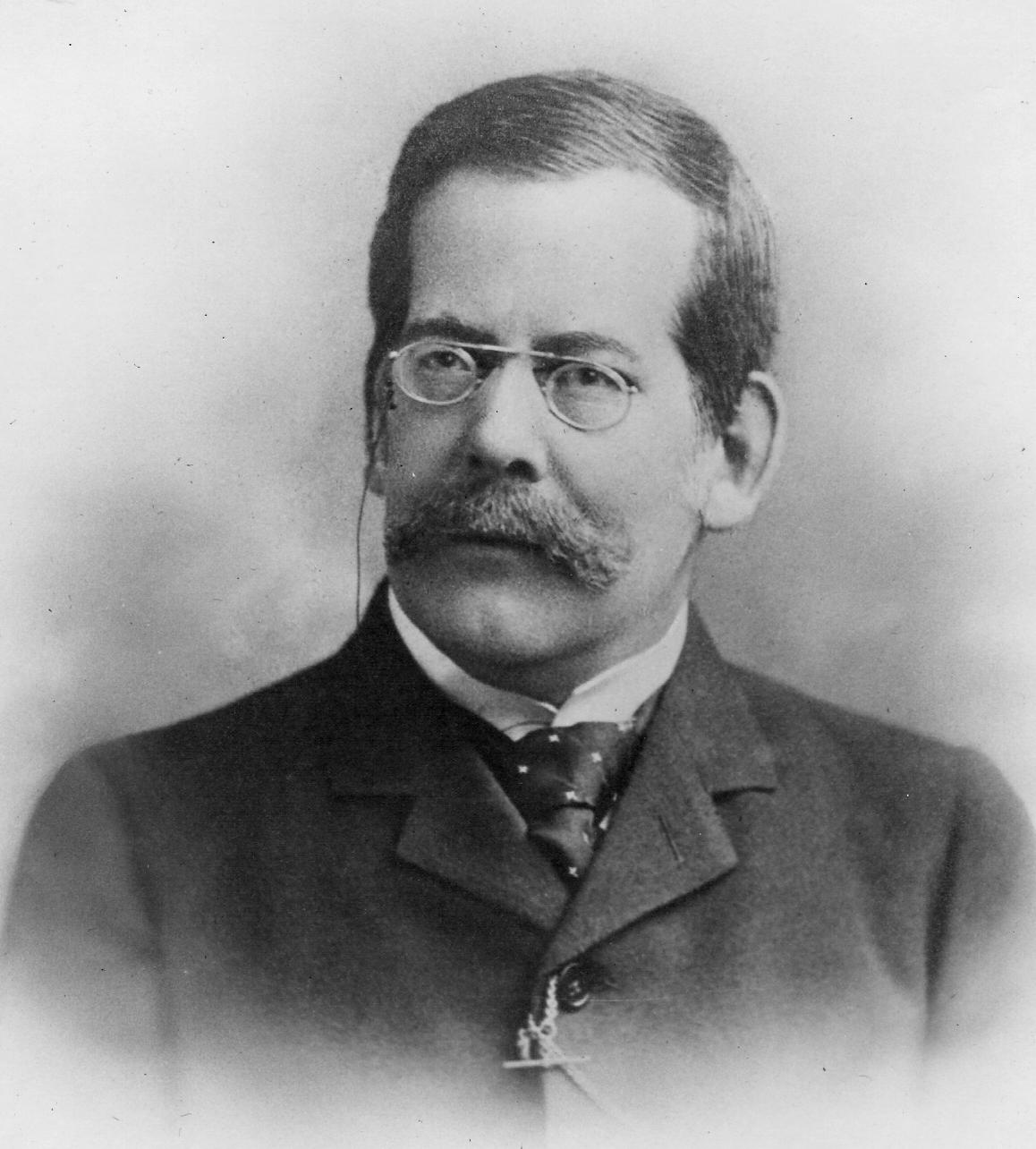|
Initial Sound Table
An initial sound table (German: ) is a table, list or chart which shows a letter together with a picture of the things whose word start with that letter. They are commonly used in German classrooms for language teaching. The first initial sound table was created in 1658 by John Amos Comenius in Orbis Pictus, a picture book intended for children. They were popularized in the German-speaking areas by Jürgen Reichen who used initial sound tables to assist students to recognise initial sounds and to get Reading (process), first reading and writing skills.Fabian Bross (2016): Anlauttabellen – Segen oder Fluch im Schriftspracherwerb?Initial Sound Tables—Blessing or Curse for Learning to Read and Write? In: ''Kritische Ausgabe. Zeitschrift für Germanistik & Literatur'', 30, pp. 108–117. ''Alternative names:'' initial sound list, initial sound chart, initial sound alphabet, alphabet chart, alphabet picture chart Writing to read In the German-speaking countries, language e ... [...More Info...] [...Related Items...] OR: [Wikipedia] [Google] [Baidu] |
John Amos Comenius
John Amos Comenius (; cs, Jan Amos Komenský; pl, Jan Amos Komeński; german: Johann Amos Comenius; Latinized: ''Ioannes Amos Comenius''; 28 March 1592 – 15 November 1670) was a Czech philosopher, pedagogue and theologian who is considered the father of modern education. He served as the last bishop of the Unity of the Brethren before becoming a religious refugee and one of the earliest champions of universal education, a concept eventually set forth in his book ''Didactica Magna''. As an educator and theologian, he led schools and advised governments across Protestant Europe through the middle of the seventeenth century. Comenius introduced a number of educational concepts and innovations including pictorial textbooks written in native languages instead of Latin, teaching based in gradual development from simple to more comprehensive concepts, lifelong learning with a focus on logical thinking over dull memorization, equal opportunity for impoverished children, educati ... [...More Info...] [...Related Items...] OR: [Wikipedia] [Google] [Baidu] |
Label
A label (as distinct from signage) is a piece of paper, plastic film, cloth, metal, or other material affixed to a container or product, on which is written or printed information or symbols about the product or item. Information printed directly on a container or article can also be considered labelling. Labels have many uses, including promotion and providing information on a product's origin, the manufacturer (e.g., brand name), use, safety, shelf-life and disposal, some or all of which may be governed by legislation such as that for food in the UK or United States. Methods of production and attachment to packaging are many and various and may also be subject to internationally recognised standards. In many countries, hazardous products such as poisons or flammable liquids must have a warning label. Uses Labels may be used for any combination of identification, information, warning, instructions for use, environmental advice or advertising. They may be stickers, per ... [...More Info...] [...Related Items...] OR: [Wikipedia] [Google] [Baidu] |
National University Of Distance Education
The National Distance Education University, known in Spanish as ''Universidad Nacional de Educación a Distancia'' (UNED), is a public research university of national scope. The university was founded in 1972 under the Ministry of Universities. It has headquarters in Madrid, Spain, with campuses in all Spanish autonomous communities. In addition, there are 14 study centres and 3 exam points in 13 countries in Europe, the Americas and Africa. The University awards undergraduate and postgraduate degrees, as well as non-degree qualifications such as diplomas and certificates, or continuing education units. Focused on distance learning combined with traditional classroom instruction (called hybrid or blended). With over 150.000 students, UNED is the largest university in Spain and the second largest in Europe. Origins and methodology Founded in 1972 with the stated purpose of providing education opportunities via a distance education system - in which students are taught while ... [...More Info...] [...Related Items...] OR: [Wikipedia] [Google] [Baidu] |
Literacy
Literacy in its broadest sense describes "particular ways of thinking about and doing reading and writing" with the purpose of understanding or expressing thoughts or ideas in written form in some specific context of use. In other words, humans in literate societies have sets of practices for producing and consuming writing, and they also have beliefs about these practices. Reading, in this view, is always reading something for some purpose; writing is always writing something for someone for some particular ends. Beliefs about reading and writing and its value for society and for the individual always influence the ways literacy is taught, learned, and practiced over the lifespan. Some researchers suggest that the history of interest in the concept of "literacy" can be divided into two periods. Firstly is the period before 1950, when literacy was understood solely as alphabetical literacy (word and letter recognition). Secondly is the period after 1950, when literacy slowl ... [...More Info...] [...Related Items...] OR: [Wikipedia] [Google] [Baidu] |
Initial Teaching Alphabet
The Initial Teaching Alphabet (I.T.A. or i.t.a.) is a variant of the Latin alphabet developed by Sir James Pitman (the grandson of Sir Isaac Pitman, inventor of a system of shorthand) in the early 1960s. It was not intended to be a strictly phonetic transcription of English sounds, or a spelling reform for English as such, but instead a practical simplified writing system which could be used to teach English-speaking children to read more easily than can be done with traditional orthography. After children had learned to read using I.T.A., they would then eventually move on to learn standard English spelling. Although it achieved a certain degree of popularity in the 1960s, it has fallen out of use. Details The I.T.A. originally had 43 symbols, which was expanded to 44, then 45. Each symbol predominantly represented a single English sound (including affricates and diphthongs), but there were complications due to the desire to avoid making the I.T.A. needlessly different from st ... [...More Info...] [...Related Items...] OR: [Wikipedia] [Google] [Baidu] |
Phonemic Awareness
Phonemic awareness is a subset of phonological awareness in which listeners are able to hear, identify and manipulate phonemes, the smallest mental units of sound that help to differentiate units of meaning ( morphemes). Separating the spoken word "cat" into three distinct phonemes, , , and , requires phonemic awareness. The National Reading Panel has found that phonemic awareness improves children's word reading and reading comprehension and helps children learn to spell. Phonemic awareness is the basis for learning phonics. Phonemic awareness and phonological awareness are often confused since they are interdependent. Phonemic awareness is the ability to hear and manipulate individual phonemes. Phonological awareness includes this ability, but it also includes the ability to hear and manipulate larger units of sound, such as onsets and rimes and syllables. Impact on reading development Studies by Vickie Snider have shown that phonemic awareness has a direct correlation w ... [...More Info...] [...Related Items...] OR: [Wikipedia] [Google] [Baidu] |
Phonetics
Phonetics is a branch of linguistics that studies how humans produce and perceive sounds, or in the case of sign languages, the equivalent aspects of sign. Linguists who specialize in studying the physical properties of speech are phoneticians. The field of phonetics is traditionally divided into three sub-disciplines based on the research questions involved such as how humans plan and execute movements to produce speech ( articulatory phonetics), how various movements affect the properties of the resulting sound ( acoustic phonetics), or how humans convert sound waves to linguistic information ( auditory phonetics). Traditionally, the minimal linguistic unit of phonetics is the phone—a speech sound in a language which differs from the phonological unit of phoneme; the phoneme is an abstract categorization of phones. Phonetics deals with two aspects of human speech: production—the ways humans make sounds—and perception—the way speech is understood. The communicative moda ... [...More Info...] [...Related Items...] OR: [Wikipedia] [Google] [Baidu] |
Phonics
Phonics is a method for teaching people how to read and write an alphabetic language (such as English, Arabic or Russian). It is done by demonstrating the relationship between the sounds of the spoken language (phonemes), and the letters or groups of letters (graphemes) or syllables of the written language. In English, this is also known as the alphabetic principle or the ''Alphabetic code''. Phonics is taught using a variety of approaches, for example: a) learning ''individual'' sounds and their corresponding letters (e.g. the word cat has three letters and three sounds c - a - t, (in IPA: , , ), whereas the word flower has six letters but four sounds: f - l - ow - er, (IPA , , , ), or b) learning the sounds of letters or groups of letters, at the word level, such as similar sounds (e.g., cat, can, call), or rimes (e.g., hat, mat and sat have the same rime, "at"), or consonant blends (also consonant clusters in linguistics) (e.g. bl as in black and st as in last), or syllabl ... [...More Info...] [...Related Items...] OR: [Wikipedia] [Google] [Baidu] |
Language Education
Language education – the process and practice of teaching a second or foreign language – is primarily a branch of applied linguistics, but can be an interdisciplinary field. There are four main learning categories for language education: communicative competencies, proficiencies, cross-cultural experiences, and multiple literacies. Need Increasing globalization has created a great need for people in the workforce who can communicate in multiple languages. Common languages are used in areas such as trade, tourism, diplomacy, technology, media, translation, interpretation and science. Many countries such as Korea (Kim Yeong-seo, 2009), Japan (Kubota, 1998) and China (Kirkpatrick & Zhichang, 2002) frame education policies to teach at least one foreign language at the primary and secondary school levels. However, some countries such as India, Singapore, Malaysia, Pakistan, and the Philippines use a second official language in their governments. According to GAO (2010), ... [...More Info...] [...Related Items...] OR: [Wikipedia] [Google] [Baidu] |
Final Sound
Final, Finals or The Final may refer to: *Final (competition), the last or championship round of a sporting competition, match, game, or other contest which decides a winner for an event ** Another term for playoffs, describing a sequence of contests taking place after a regular season or round-robin tournament, culminating in a final by the first definition. *final (Java), a keyword in the Java programming language *Final case, a grammatical case *Final examination or finals, a test given at the end of a course of study or training *Part of a syllable *Final, a tone of the Gregorian mode Art and entertainment * ''Final'' (film), a science fiction film * ''The Final'' (film), a thriller film * ''Finals'' (film), a 2019 Malayalam sports drama film *Final (band), an English electronic musical group * ''Final'' (Vol. 1), album by Enrique Iglesias * ''The Final'' (album), by Wham! *"The Final", a song by Dir en grey on the album ''Withering to Death'' * ''Finals'' (comics), a four-i ... [...More Info...] [...Related Items...] OR: [Wikipedia] [Google] [Baidu] |
Medial Sound
Medial may refer to: Mathematics * Medial magma, a mathematical identity in algebra Geometry * Medial axis, in geometry the set of all points having more than one closest point on an object's boundary * Medial graph, another graph that represents the adjacencies between edges in the faces of a plane graph * Medial triangle, the triangle whose vertices lie at the midpoints of an enclosing triangle's sides * Polyhedra: ** Medial deltoidal hexecontahedron ** Medial disdyakis triacontahedron ** Medial hexagonal hexecontahedron ** Medial icosacronic hexecontahedron ** Medial inverted pentagonal hexecontahedron ** Medial pentagonal hexecontahedron ** Medial rhombic triacontahedron Linguistics * A medial sound or letter is one that is found in the middle of a larger unit (like a word) ** Syllable medial, a segment located between the onset and the rime of a syllable * In the older literature, a term for the voiced stops (like ''b'', ''d'', ''g'') * Medial or second person demonstr ... [...More Info...] [...Related Items...] OR: [Wikipedia] [Google] [Baidu] |




